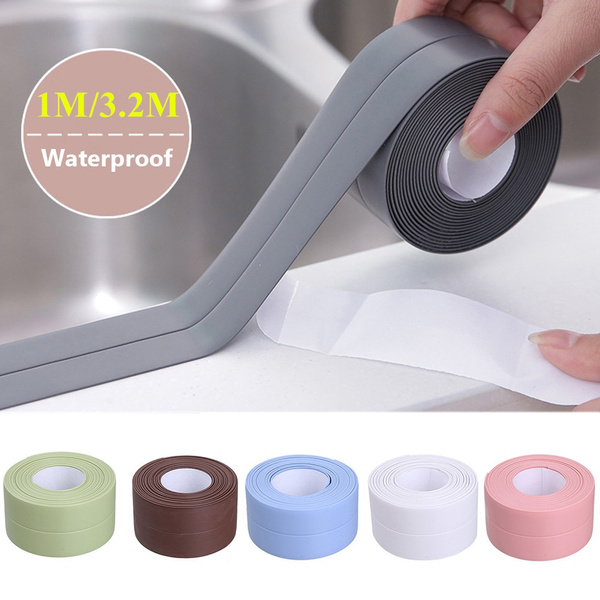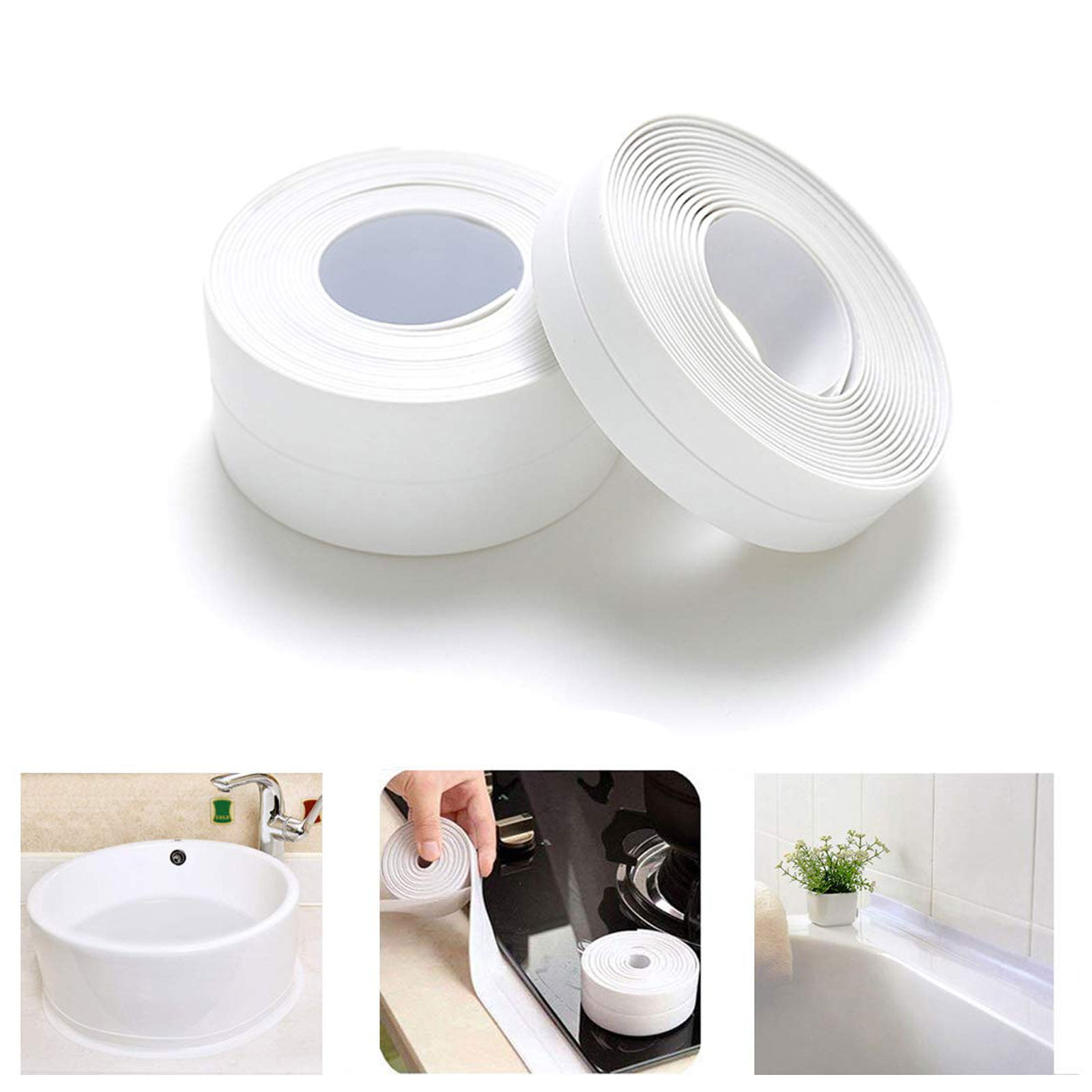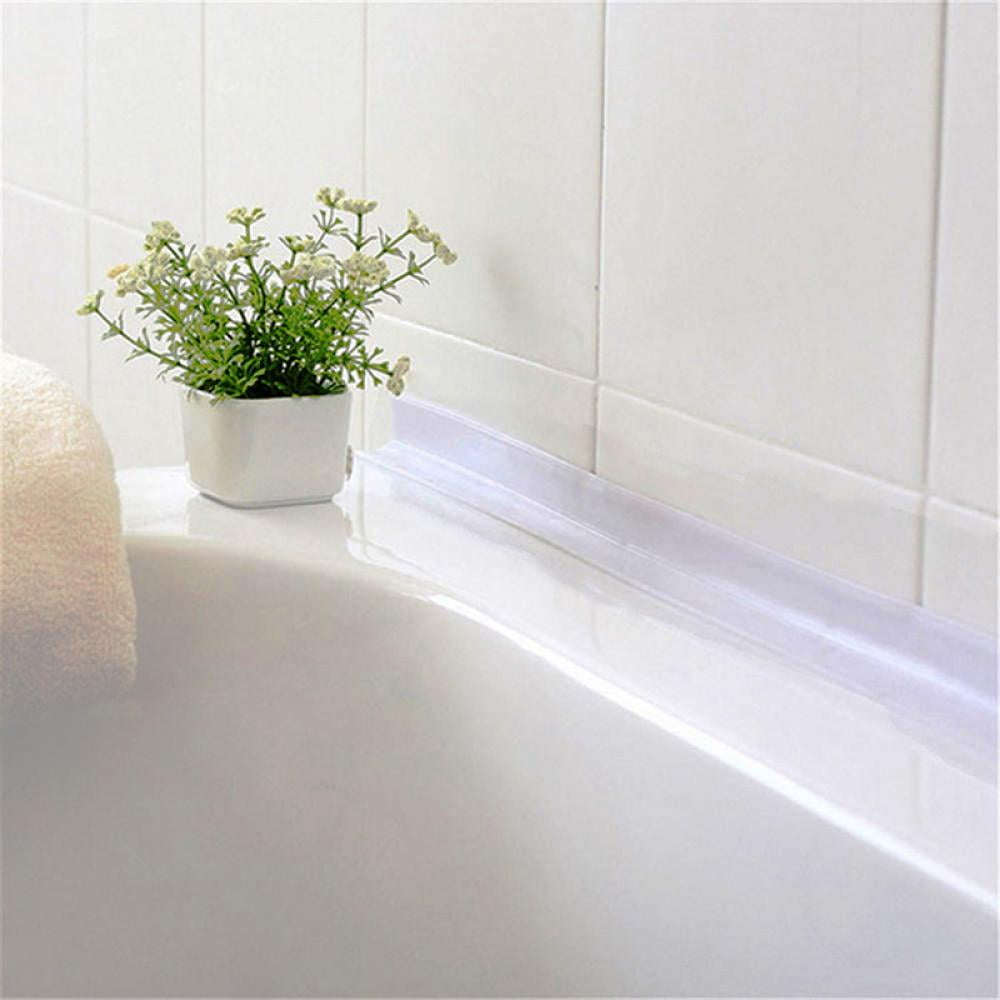A bathroom tile sealing strip is a vital component in ensuring the durability and longevity of tiled surfaces in wet environments. These strips are typically made of a flexible, waterproof material such as PVC or silicone and are installed in the joints between tiles to create a watertight seal. The primary function of a sealing strip is to prevent water from seeping through the gaps between tiles and causing damage to underlying surfaces, such as drywall or subflooring. By creating a barrier against moisture, sealing strips help protect the integrity of the tiled surface and extend its lifespan.
One of the main benefits of using a sealing strip in the bathroom is its ability to prevent water damage and mold growth. In areas with high humidity and moisture levels, such as bathrooms and showers, water can easily penetrate through the grout lines between tiles and seep into the underlying structure. Over time, this moisture can lead to mold and mildew growth, as well as damage to the walls, floors, and other surfaces. By installing a sealing strip, you can create a watertight barrier that prevents water from infiltrating the tile joints and causing these issues.
In addition to protecting against water damage, a sealing strip can also enhance the overall appearance of tiled surfaces in the bathroom. Sealing strips come in a variety of colors and finishes to match the grout and tile, creating a seamless and cohesive look. They can also be used to create decorative accents or borders, adding visual interest and style to the space. Whether you prefer a subtle and understated look or a bold and dramatic design, there are plenty of options to choose from when it comes to sealing strips for bathroom tiles.
Proper installation of a sealing strip is crucial for ensuring its effectiveness and longevity. The strip should be installed tightly against the tile joints, with no gaps or spaces where water can seep through. It’s important to clean and dry the tile joints thoroughly before installing the sealing strip to ensure a strong bond and watertight seal. Additionally, be sure to use a high-quality, waterproof adhesive or caulk to secure the strip in place and prevent water from penetrating underneath.
Regular maintenance of sealing strips is essential for preserving their effectiveness and preventing water damage. It’s important to clean the strips regularly with a mild detergent and water to remove dirt, grime, and soap scum buildup. Inspect the strips periodically for signs of wear or damage, such as cracking, peeling, or discoloration, and replace them as needed to maintain a watertight seal. By taking proper care of your sealing strips, you can ensure the long-term durability and integrity of your tiled surfaces in the bathroom.
A bathroom tile sealing strip is a crucial component in protecting tiled surfaces against water damage and mold growth. By creating a watertight barrier in the joints between tiles, sealing strips help prevent moisture from seeping through and causing damage to underlying surfaces. They also enhance the appearance of tiled surfaces, creating a seamless and cohesive look while adding style and visual interest to the space. Proper installation and maintenance of sealing strips are essential for ensuring their effectiveness and longevity, so be sure to follow manufacturer guidelines and inspect the strips regularly for signs of wear or damage. With proper care, sealing strips can help keep your bathroom tiles looking their best for years to come.
See How Sealux is Like No Other Bathroom Tiling Trim on the Market!
Wall Corner Sealing Adhesive Tape PVC Waterproof Self Adhesive Tile Crack Sink Edge Repair Sealant Tape Kitchen Bathroom Crevice Strip Wish
EEEkit Caulk Strip PE Self-Adhesive Self Adhesive Caulking Sealant Tape Flexible Waterproof Sealing Repair Tape Decorative Sealant Trim for Kitchen
Caulk Strip PE Self Adhesive Tape for Bathtub Bathroom Shower Toilet Kitchen and Wall Sealing
Caulk Strip Flexible Self Adhesive Sealing Tape Waterproof for Kitchen Bathroom Tub Shower Floor Household PVC Material-buy at a low prices on Joom
Self Adhesive Molding Delaman Wall Tile Trim-Wall Sealing Strip Self Adhesive Sticker for Bathtub Bathroom Shower Toilet Kitchen and Wall Sealing
ITNEX 50meters Bathroom Accessories Sets Wall Sealing Tape
MELLCO Waterproof Anti-Mildew PVC Trim Strips Self-Adhesive Caulk for Kitchen Countertops/Sink/Toilet/Bathroom/Shower/Bathtub andMore (White,1
Kitchen Bathroom Bathtub Corner Sealant Tape Waterproof Mould Proof Sealing Strip Adhesive Tapes-buy at a low prices on Joom e-commerce platform
Bathroom Bath Seal Strip Inside Corner Internal Tile Trim
Newly PVC Sealing Strip Bathroom Toilet Kitchen Wall Sink Tile Reapir Waterproof Mildew Tape E2shopping 99
Details about 2x 16FT 38MM Bathroom Bath Wall Sealing Strip Self Adhesive Tape Sink Edge Trim
Related articles:
- Elegant Bathroom Tile Design
- Bathroom Tile Design Ideas Images
- Daltile Bathroom Tile Ideas
- Bathroom Tiles Northern Ireland
- Bathroom Tile White Ideas
- Black Mold In Bathroom Tile Grout
- Bathroom Tile Layout Pictures
- Pink Bathroom Tiles Ideas
- Large Beige Bathroom Tiles
- Bathroom Tile Shower Floor
Bathroom Tile Sealing Strip
When renovating a bathroom, waterproofing is one of the most important things to consider. Bathrooms are exposed to water and moisture daily, making them more susceptible to damage and mold growth. A sealing strip is one of the best ways to protect your bathroom from water damage. Let’s discuss everything you need to know about bathroom tile sealing strips – from what they are to how they work and how to install them properly.
What is a Bathroom Tile Sealing Strip?
A bathroom tile sealing strip is a thin, flexible piece of material that is designed to fill the gap between two surfaces. In this case, it fills the gap between the wall and the bathtub or shower tray. The strip acts as a barrier against water and moisture, preventing it from seeping into the gap and causing damage. Sealing strips come in different materials such as PVC, silicone, and rubber.
Why Do You Need a Bathroom Tile Sealing Strip?
Without a sealing strip, water can seep into the gap between the wall and the bathtub or shower tray, causing several problems such as:
Water damage: When water seeps into the gap between tiles and walls, it can cause damage to the walls and floors. This can lead to costly repairs.
Mold growth: Moisture can lead to mold growth which can be dangerous for your health.
Bad odors: If water seeps into small cracks in your bathroom tiles, it can produce bad smells that are difficult to get rid of.
How Does a Bathroom Tile Sealing Strip Work?
The sealing strip works by creating a barrier against water. When installed properly, it ensures that water does not seep into the gap between tiles and walls. The strip also helps keep out dirt and grime, ensuring that your bathroom remains clean.
Types of Bathroom Tile Sealing Strips
PVC Sealing Strips: PVC sealing strips are made from a type of plastic and are known for their durability. They are easy to install and can be cut to size easily.
Silicone Sealing Strips: Silicone sealing strips are known for their flexibility and water-resistant properties. They are perfect for use in bathrooms as they can withstand high levels of moisture.
Rubber Sealing Strips: Rubber sealing strips are an affordable option that provides excellent sealing properties. They are easy to install and can be cut to size easily.
How to Install a Bathroom Tile Sealing Strip
Clean the surface: Before installing the sealing strip, ensure that the surface is clean and dry.
Measure the gap: Measure the gap between the wall and the bathtub or shower tray to determine the length of the strip you need.
Cut the sealing strip: Use a sharp knife or scissors to cut the sealing strip to size.
Apply adhesive: Apply adhesive to one side of the sealing strip, making sure it covers the entire length.
Install the strip: Carefully press the sealing strip onto the gap, ensuring that it is flush against both surfaces.
Let it dry: Allow the adhesive to dry completely before using your bathroom.
How long does a bathroom tile sealing strip last?
The lifespan of a bathroom tile sealing strip depends on several factors such as material quality, installation method, and level of maintenance. However, most sealing strips last for at least a few years before needing replacement.
Can I replace a bathroom tile sealing strip myself?
Yes, you can replace a bathroom tile sealing strip yourself as long as you follow proper installation procedures.
How do I remove an old bathroom tile sealing strip?
To remove an old bathroom tile sealing strip, use a sharp knife or scraper to gently pry it away from the surface. Be careful not to damage the surface underneath.
A bathroom tile sealing strip is a small but essential part of any bathroom renovation. It helps to protect your bathroom from water damage, mold growth, and bad odors. With the right material and installation method, a sealing strip can last for several years, saving you money on expensive repairs and maintenance in the long run. Remember to measure carefully, cut accurately, and follow proper installation procedures for the best results.
Overall, installing a bathroom tile sealing strip is a simple yet effective way to ensure that your bathroom remains clean and free from water damage. Whether you choose PVC, silicone, or rubber sealing strips, make sure to take proper measurements and follow installation procedures for the best results. With regular maintenance and replacement when necessary, your sealing strip can provide long-lasting protection for your bathroom tiles and walls.













